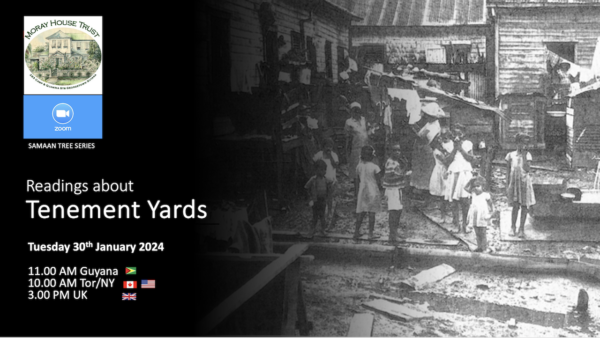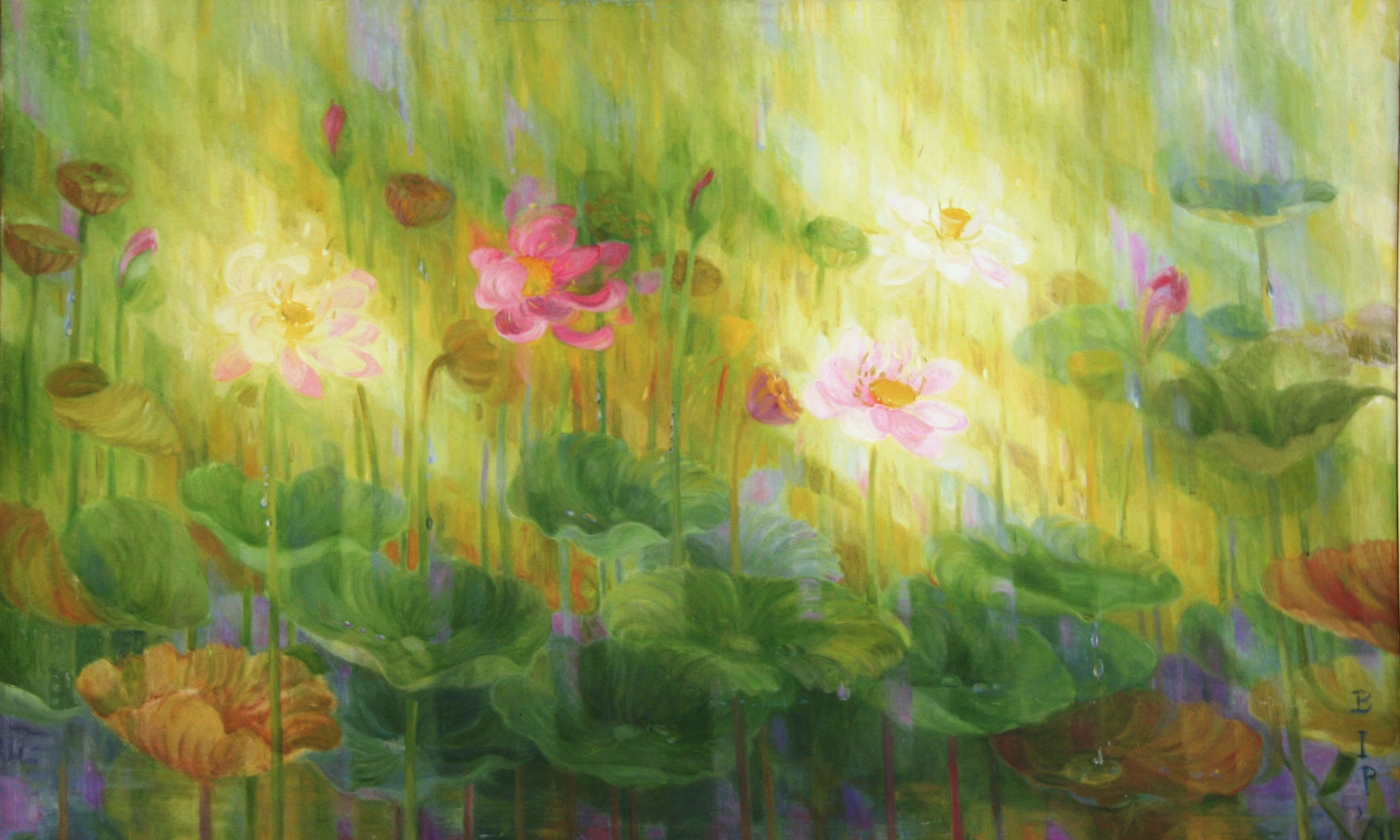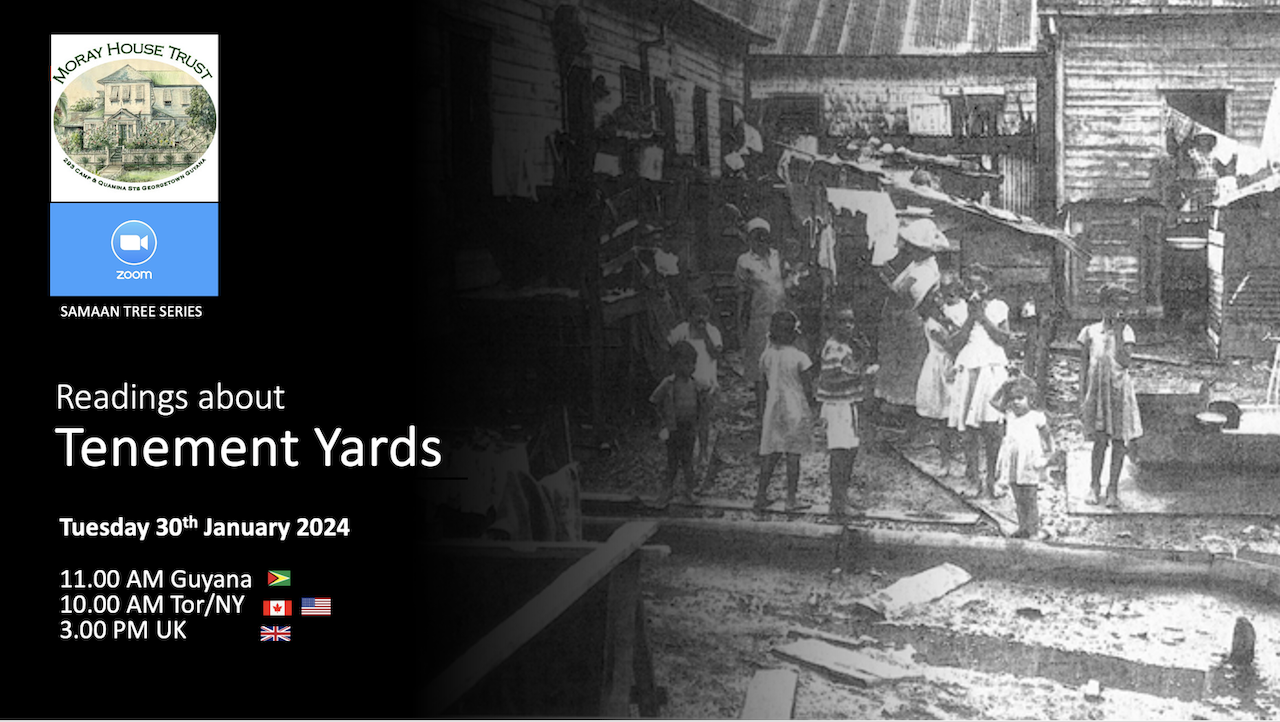Activity: Readings with illustrations
Topics: History
Date: Tuesday 30th January 2024
YouTube: https://youtu.be/BSeL-laZcUY

EVENT: Readings with illustrations
TITLE: Tenement Yards
DATE: Tuesday 30th January 2024
YOUTUBE: https://youtu.be/BSeL-laZcUY
Tenement yards once punctuated the city. They were, in a sense, the urban equivalent of the logies on the sugar estates. As with the estates, each tenement yard had its own ecosystem: a constant flux of characters, communities and subcultures. These readings, drawn from Wilson Harris, Stanley Greaves and Godfrey Chin, seek to convey snippets of a lost world.
This event was part of the Trust’s Samaan Tree Series; short, informal mid-week sessions on a variety of topics.
MODERATOR’S INTRODUCTION
Although many of us grew up in Georgetown within a stone’s throw of a tenement yard, most, if not all of them, have disappeared. Few records endure: there are, for example, no paintings of tenement yards in our national collection.
Some years ago, Stanley Greaves described the tenement yards to me as the purest form of the ‘co-operative republic’ to which generations of our politicians have paid lip service. The readings today show that the yards gave rise to a certain type of co-existence, a certain type of community born of the necessity of finding a way of living, cheek by jowl, with a random assortment of people. Each yard was its own eco-system. While it would be simplistic to romanticise life in a tenement yard, we clearly have much to learn from them as social and cultural institutions.
We begin with a short, highly cinematic, extract from Wilson Harris. In the same way that tenement yards now drift in the mist of our memories, we have also forgotten why our streets carry names like Waterloo. Harris reminds us. And, through the eyes of a young boy, he conjures the design of the yards and also sets us thinking about the relationship between landlord and tenant – a dependency that is freighted with the weight of previous historical relationships and one that endures. Even today, perhaps especially today, poor people in Georgetown rarely own property.
Stanley Greaves ushers forth a cast of characters that could easily find a home in one of Dickens or Roy Heath’s or Edgar Mittelholzer’s novels. And Godfrey Chin takes us on a whistlestop tour of a clutch of tenement yards in the city – some of which he lived in and others which he visited.
Before we start, I’d like to plant the seed of an idea.
It’s not coincidental that steel pans and steel bands emerged from tenement yards. These are exactly the ‘progenies of change’ that Harris alludes to. Partly through neglect and partly due to the pace of change, Guyana faces an erasure of our history.
Amidst the recent budget chatter, there has been some muttering about funding for new museums. Might it be worth identifying a piece of land in Georgetown that has links with or could be adapted to accommodate a tenement yard and re-creating a tenement yard / pan yard museum? With, of course, the appropriate historical guidance…..
ONLINE RESOURCES:
1: 132 Carmichael Street by Stanley Greaves: https://www.stabroeknews.com/2022/12/04/sunday/132-carmichael-street/
2: Life in the Old Tenement Yards: https://www.stabroeknews.com/2013/07/08/news/guyana/life-in-the-old-tenement-yards/
3: As a Jesuit priest, the architect Rev Ignatius Scholes visited the poorer people of Georgetown. He describes the houses and interiors of the homes visited in late 19th century Georgetown in this publication.
“Sketches of African and Indian Life in British Guiana” by Rev Ignatius Scoles, 1885.
The text is available online:
https://babel.hathitrust.org/cgi/pt?id=hvd.hn1yvb&seq=1

